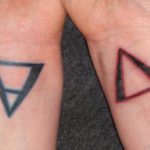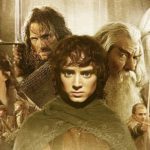Ask any movie fan, and they’ll tell you that the Battle of Helm’s Deep in The Lord of the Rings: The Two Towers is still one of the most visually stunning and technically complex battle scenes in all of movie history. In fact, almost 20 years after its release, and very few movies or TV shows have been able to match it, let alone come close. Why was it so successful?
A Background on the Battle
In terms of scale, extremely few movies can compete: instead of relying completely on cinematic spectacle, the Battle of Helm’s Deep used technology to augment the emotion and the storytelling already present in the movie, leveraging the special effects to underline the story arcs of each character. From its technical mastery, moving and poignant dialogue, and superb acting, not even the Battle of Pelennor Fields (which, in itself, was a stunning work of art) could touch Helm’s Deep.

The Battle of Helm’s Deep serves as the narrative climax of The Two Towers. Not only did they use more than 20,000 extras, Peter Jackson and crew also used state-of-the-art CGI technology like the MASSIVE (Multiple Agent Simulation System in Virtual Environment) animation program, which helped them exponentially increase the number of extras on screen with CGI models but making them act independently for a more human feel.
But again, let me reiterate: MASSIVE was used to augment, not replace, large-scale crowds and battles. For the most part, the Orcish army we see on-screen was made up of thousands upon thousands of extras, all decked out in battle armor and makeup. In fact, there were so many extras that they had to convert a stadium into an oversized sound studio just to record the war cries of every Orc.

While CGI was used to enhance other features in the Battle of Helm’s Deep, there are just some things that are best left to nature. Almost all of the rain we see in the battle was natural, with man-made rain only being used during warm nights. Speaking of nights, most of the scene was filmed only in nighttime. The cast and crew spent 90 nights shooting in the dark, with sleeting rain and thousands upon thousands of extras. Basically, Peter Jackson started a war, and then shot it.
The whole battle scene took a grand total of 120 days to film, which is actually 10 days more than the shooting schedule of some films. Out of those 120 days, the crew managed to shoot over 20 hours of footage, only 10 minutes of which making the final cut. But what a 10 minute scene it was! Every moving part of the Battle of Helm’s Deep worked so well with, not only the whole of The Two Towers movie, but the entire trilogy in general.
A Technical Marvel
At the time of the movie’s release, most of Hollywood was basking in the glow of the CGI revolution; with the advent of better CGI effects for movies, many studios over the course of a couple of years decided to pretty much slip it in whenever they can. By the time The Matrix came out in 1999, Hollywood was in a special effects arms race to see who could produce the most realistic fake scenes into movies. Peter Jackson was aware of this, and decided to go against the grain and instead perfect the use of practical effects.

In a time when studios would shell out millions of dollars for their digital effects, Peter Jackson went the other way and spent that money on extras, real horses, building sets, and basically going back to hand-made movie magic.
The precision and sophistication by which Jackson merged practical and digital effects became the benchmark for realism in movies. It also set a new standard rule: only use computer effects when there is no physical way to create something, everything else you do for real. This approach to the Lord of the Rings earned it its well-deserved accolades and helped it become the classic trilogy that it is today. That Helm’s Deep exemplifies this approach only underlines the fact it’s a mindset that works.

But beyond its technical marvel, the Battle of Helm’s Deep was also a stroke storytelling genius. Peter Jackson would make sure that the battle wasn’t just going to be a cool spectacle to look at (even though it is), but also as a narrative linchpin that would showcase major characters undergoing drastic changes to their personality: basically, it made the good guys even better and made the bad guys more evil. This careful dance of spectacle and story would be rare to see on a Broadway stage, let alone a multi-million dollar blockbuster movie.
How Do Other Battle Scenes Measure Up?
For contrast, let’s take a look at two of my other favorite battle scenes: Captain America: Civil War’s airport fight, and Game of Thrones’ “Battle of Winterfell”. Both scenes tried to replicate the Battle of Helms Deep sheer epic and spectacle, but both failed. Here’s why:
In Captain America: Civil War, Tony Stark and Steve Rogers take opposing stances regarding the Sokovia Accords, a United Nations resolution that would require all superheroes to reveal their identity to the government in order to keep them accountable. Tony Stark, along with War Machine, Black Widow, Vision, Spiderman, and Black Panther, feel like this is necessary, while Steve Rogers, the Falcon, Scarlet Witch, Hawkeye, Ant-Man, and the Winter Soldier disagree vehemently. A conflict ensues, which culminates in an epic standoff at the Berlin Airport.

Right off the bat, we’ll disregard scale: it would be unfair to compare The Two Towers massive cast of extras to Civil War’s 12 on 12 shindig. However, it is fair to say that, despite having only 12 people on screen, Civil War was able to match the Battle of Helms Deep in terms of spectacle. I mean, who didn’t want to see Iron Man take on Captain America?!
But looking past the lasers and big explosions, the Battle of Helms Deep managed to bring major characters face-to-face with their inner conflicts, forced them to rise above their petty selves, and become the true heroes that they could be. Civil War, on the other hand, had the heroes fight one another, only for the focus to go back to Iron and Captain America, which, admittedly, was the whole point of the movie anyway. Basically.The Two Towers placed equal emphasis on characters, Civil War was about Captain America and Iron Man, and everyone else was inconsequential.
The Battle of Winterfell, on the other hand, actively tried to replicate the Battle of Helms Deep’s success, with the director of the former reportedly spending hours studying the epic Two Towers scene in order to approach his own work.
In the Game of Thrones episode “The Long Night”, the combined forces of the Northern Houses, the River Lords, the armies of the Iron Islands, the Nights Watch, and Daenerys Targaryen’s forces square off against the Night King and his Army of the Dead. The two sides have their showdown at the Stark stronghold in Winterfell, just a few miles away from the Night King’s realms.
At 80 minutes and 40 seconds, it’s literally 8 times longer than the entire Battle of Helms Deep, and from a technical perspective, both scenes are comparable: both used armies of extras in lieu of heavy CGI, both relied more on practical effects and physical sets, and both tried to serve as narrative linchpins for their storylines.
Both scenes also depict evil forces besieging the good forces stronghold, which is always a good way to showcase character growth as well as visual spectacle and storytelling. However, the Battle of Helms Deep chose to keep it simple, while Game of Thrones decided to up the aesthetic, which unfortunately made the story suffer.
Setting aside the tactical failures of the Westerosi armies (so much so that even medieval experts chimed in at the inefficacy of Jon Snow and Daenerys Targaryen’s leadership skills), the Battle of Winterfell also fell short in terms of story telling: for instance, the Dothraki charge was a visually stunning sequence, but served pretty much no purpose both tactically and narratively: the why build up the Dothraki as fierce and fearsome warriors throughout 7 seasons only for them to be slaughtered by White Walkers in seconds, who themselves will be wiped out by the end of the episode? It served no purpose other than spectacle, but it came at the expense of disregarding the character of both the Dothraki horsemen and the undead White Walkers.

On the other hand, Helm’s Deep had no visual sequence that didn’t serve character or narrative development as a whole. A good example of this would be Theoden King and party charging the besieging Orcs from the keep. Throughout the entire movie, Theoden King was content to weather both the invading Uruk-hai armies and the entire conflict between Mordor and the rest of Middle-Earth from behind the near-impregnable Helm’s Deep. Unfortunately, the evil wizard Saruman had devised a plan for the Uruk-hai to breach the titanic walls of the Rohirrim fortress.
Although Theoden King fought valiantly at the beginning of the battle, as it goes on and the Uruk-hai take more ground, the King of Rohan begins to shrink, eventually cowering in despair as their enemies pounded at their door.
It is here when major changes in the characters happen: Aragorn takes charge and rallies the King to fight, while Legolas and Gimli set aside racial differences in order to serve the greater good. Even Theoden King, who was enthralled by Grima Wormtongue for the first few minutes of the movie, finally regains his confidence as King and leader of his nation. The party then charges the enemy Uruk-hai on noble steeds with swords drawn high in the air.

Visually, a stunning sequence that underlined each character’s dedication to heroism and gallantry, but it did not sacrifice any of the story building that the movie already undertook. By the time Gandalf arrives with the rest of the Rohirrim forces, each character in Helm’s Deep had completed their narrative story arcs: Theoden is once again King in both name and function, Aragorn is affirmed as a noble and brave leader that is deserving of leading the armies of Men against Sauron, while Legolas and Gimli reaffirm the friendship between Elves and Dwarves. All of this completion, of course, is visually represented by Gandalf and his staff of light, blinding the naturally evil Uruk-hai, much like how every character has finally overcome the blackness of their own hearts, to be blessed by heavenly light from above.
Not Size, But Story
This is where Civil War and Game of Thrones failed; by sacrifice story over spectacle, they take away from the gravitas of their story, shifting attention from a deeper, emotional connection with the characters and story, and focusing on an almost-shallow display of lights and sound.

Civil War and Game of Thrones, despite extraordinary technical marvel they pulled off, all the more cemented the idea that more isn’t necessarily better: rather, it showed that creating stories and characters, and treating them with narrative logic and cohesion, is so much more important to audience members than explosions and cool fight scenes.
This is why the Battle of Helm’s Deep remains one of the best fight scenes of all time: you actually care about what happens to the heroes, and their success (despite, admittedly, being a deus ex machina) was brought about in a natural, un-contrived sort of way, all the while maintaining the cohesion of the narrative as a whole.
For me, The Lord of the Rings: The Two Towers is the Empire Strikes Back of the franchise –it had the coolest battle scene, the most character growth, and while no one had their arm chopped off (except, of course, for a few thousand Uruk-hai), the intrigue and suspense was present in both films.
To fully appreciate The Lord of the rings: The Two Towers, here is the correct order to watch hobbit and lord of the rings







